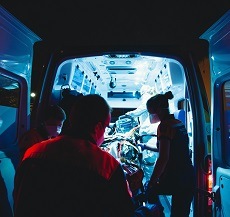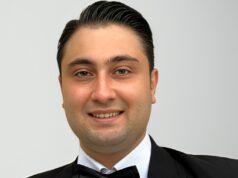 A specialised ‘brain-wave cap’, designed by researchers in The Netherlands, may be able to diagnose stroke patients while they are in an ambulance—thus allowing them to receive appropriate treatments more quickly.
A specialised ‘brain-wave cap’, designed by researchers in The Netherlands, may be able to diagnose stroke patients while they are in an ambulance—thus allowing them to receive appropriate treatments more quickly.
“Our research shows that the brain-wave cap can recognise patients with large ischaemic stroke with great accuracy,” said Jonathan Coutinho (Amsterdam University Medical Center [UMC], Amsterdam, The Netherlands), one of the inventors of the device. “This is very good news, because the cap can ultimately save lives by routing these patients directly to the right hospital.”
The research Coutinho references here was recently published and can be seen in the journal Neurology.
Neurologist Coutinho, alongside technical physician Wouter Potters and radiologist Henk Marquering (both Amsterdam UMC), invented the brain-wave cap, which allows an electroencephalography (EEG) to be carried out in an ambulance. These brain-wave tests can ultimately show whether or not there is an ischaemic stroke present, and if the blocked cerebral blood vessel is large or small.
This distinction is key in determining which treatment option is selected: in case of a small ischaemic stroke, the patient receives a blood-thinning medication, and, in case of a large ischaemic stroke, the blood clot may be removed via a mechanical thrombectomy procedure in a specialised hospital.
“When it comes to stroke, time is literally brain,” said Coutinho. “The sooner we start the right treatment, the better the outcome. If the diagnosis is already clear in the ambulance, the patient can be routed directly to the right hospital, which saves valuable time.”
Between 2018 and 2022, the smart brain-wave cap was tested in 12 Dutch ambulances, with data being collected from almost 400 patients. The study results now published in Neurology show that the brain-wave cap can recognise patients with a large ischaemic stroke with a high level of accuracy.
“This study shows that the brain-wave cap performs well in an ambulance setting,” Coutinho added. “For example, with the measurements of the cap, we can distinguish between a large or small ischaemic stroke.”
In order to develop the brain-wave cap into a product and bring it to the market, TrianecT—an Amsterdam UMC spin-off company—was founded in 2022. Additionally, a follow-up study, AI-STROKE, is currently ongoing in which even more measurements will be collected in order to develop an algorithm for improved recognition of a large ischaemic stroke in the ambulance.
These efforts are in line with the conclusion of Coutinho et al’s recent publication in Neurology, in which they state that—despite the potential shown by EEG to detect anterior large-vessel occlusion stroke in the prehospital setting—EEG data quality “needs to be improved” prior to its future implementation within such settings.
The Dutch Heart Foundation has also recognised the importance of this research and has made €4 million available for large-scale research into faster treatment of ischaemic stroke, according to an Amsterdam UMC press release.









